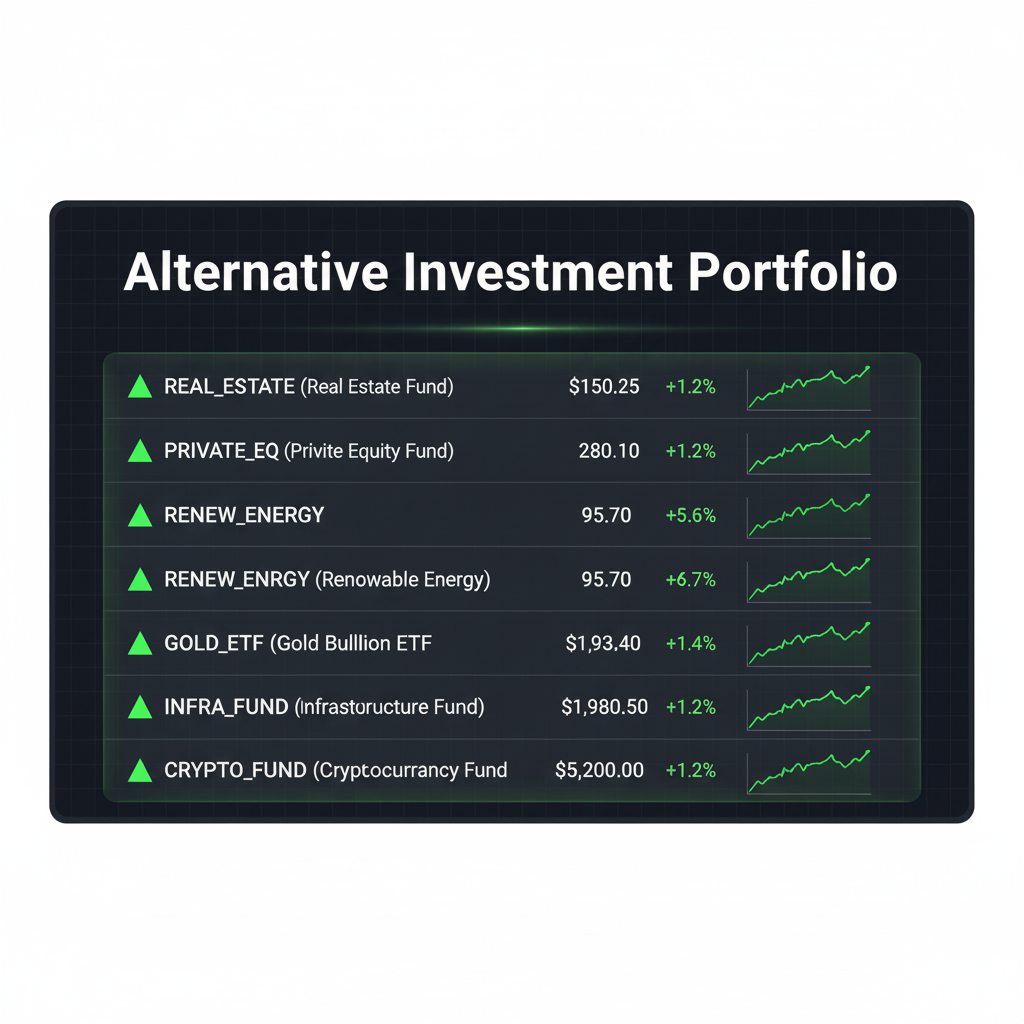
The Rise of Alternative Investments
Alternative investments have been gaining traction in recent years, as investors seek diversification and higher returns in an increasingly volatile market. According to a report by Bloomberg, the global alternative investment market is expected to grow to $17.7 trillion by 2025, up from $13.5 trillion in 2020. This surge is driven by a combination of factors, including the low-interest-rate environment, the search for yield, and the desire for portfolio diversification.
Why Hedge Funds Are Embracing Alternatives
Hedge funds have long been at the forefront of alternative investment strategies. These sophisticated investors are leveraging alternatives to generate alpha and protect against market downturns. A recent study by Reuters found that hedge funds are increasingly allocating capital to private equity, real estate, and hedge fund strategies. This shift is not only about maximizing returns but also about managing risk in a more dynamic and unpredictable market.
Common Misconceptions About Alternative Investments
Despite their growing popularity, many retail investors remain skeptical about alternative investments. One common misconception is that they are too complex or only suitable for institutional investors. However, platforms like Nasdaq and CNBC have made it easier for individual investors to access and understand these opportunities. Another myth is that alternatives are illiquid, but with the rise of liquid alternatives, this is no longer a significant barrier.
The Bear Market to Bull Run Transition
The past few years have seen a remarkable turnaround in the performance of alternative investments. During the bear market of 2020, many alternative assets, such as private equity and real estate, held their value better than traditional stocks and bonds. As the market recovered, these assets have continued to outperform, driven by strong fundamentals and strategic positioning. SEC data shows that alternative investment funds have seen a surge in inflows, indicating a growing confidence among investors.
The Future of Wealth and Alternative Investments
Looking ahead, alternative investments are poised to play a crucial role in the wealth management landscape. The ongoing economic recovery, coupled with technological advancements and demographic shifts, is creating new opportunities in sectors like renewable energy, healthcare, and technology. A report by Yahoo Finance suggests that these sectors will be key drivers of growth in the coming years, making alternative investments an essential component of any diversified portfolio.
The Hidden Truth Behind Alternative Investments
While alternative investments offer significant potential, they also come with unique challenges and risks. One of the hidden truths is that not all alternative investments are created equal. It’s crucial to conduct thorough due diligence and understand the underlying assets and strategies. Investopedia provides valuable insights into the different types of alternative investments and how to evaluate them effectively.
Key Signals for the Alternative Investment Boom
To capitalize on the alternative investment boom, investors need to be aware of key signals. These include market trends, regulatory changes, and technological advancements. For example, the increasing focus on environmental, social, and governance (ESG) criteria is reshaping the investment landscape. MarketWatch highlights how ESG-focused funds are outperforming traditional ones, making them an attractive option for socially conscious investors.
The Alternative Investment Paradox
The paradox of alternative investments lies in the fact that conventional wisdom often fails to capture their true potential. Many investors are still hesitant to allocate a significant portion of their portfolio to alternatives, despite the evidence suggesting that they can provide better risk-adjusted returns. TradingView data shows that alternative investments have consistently outperformed traditional assets over the past decade, challenging the notion that they are too risky or illiquid.
Driving Forces Behind the Surge
Several factors are driving the surge in alternative investments. The low-interest-rate environment has made traditional fixed-income investments less attractive, pushing investors to seek higher yields elsewhere. Additionally, the rise of fintech and digital platforms has democratized access to alternative assets, making them more accessible to a broader range of investors. Morningstar research indicates that the ease of access and transparency provided by these platforms are key drivers of the alternative investment boom.
How to Beat the Market and Secure Your Future
To beat the market and secure your financial future, it’s essential to diversify your portfolio with alternative investments. This can help mitigate the impact of market volatility and provide stable returns over the long term. Consider investing in private equity, real estate, and hedge funds, as well as newer asset classes like cryptocurrencies and NFTs. Bloomberg offers a wealth of resources to help you navigate these opportunities and make informed decisions.
